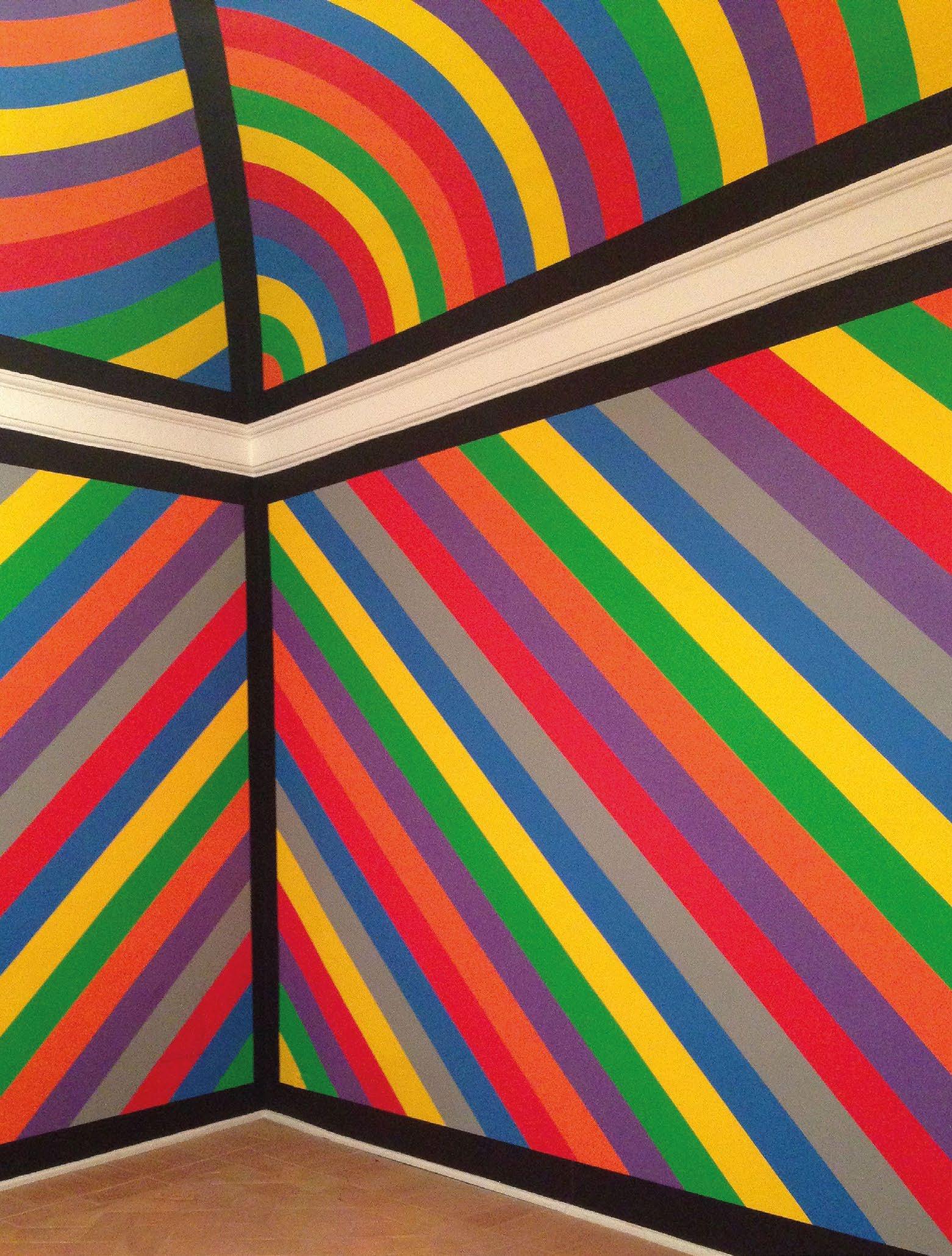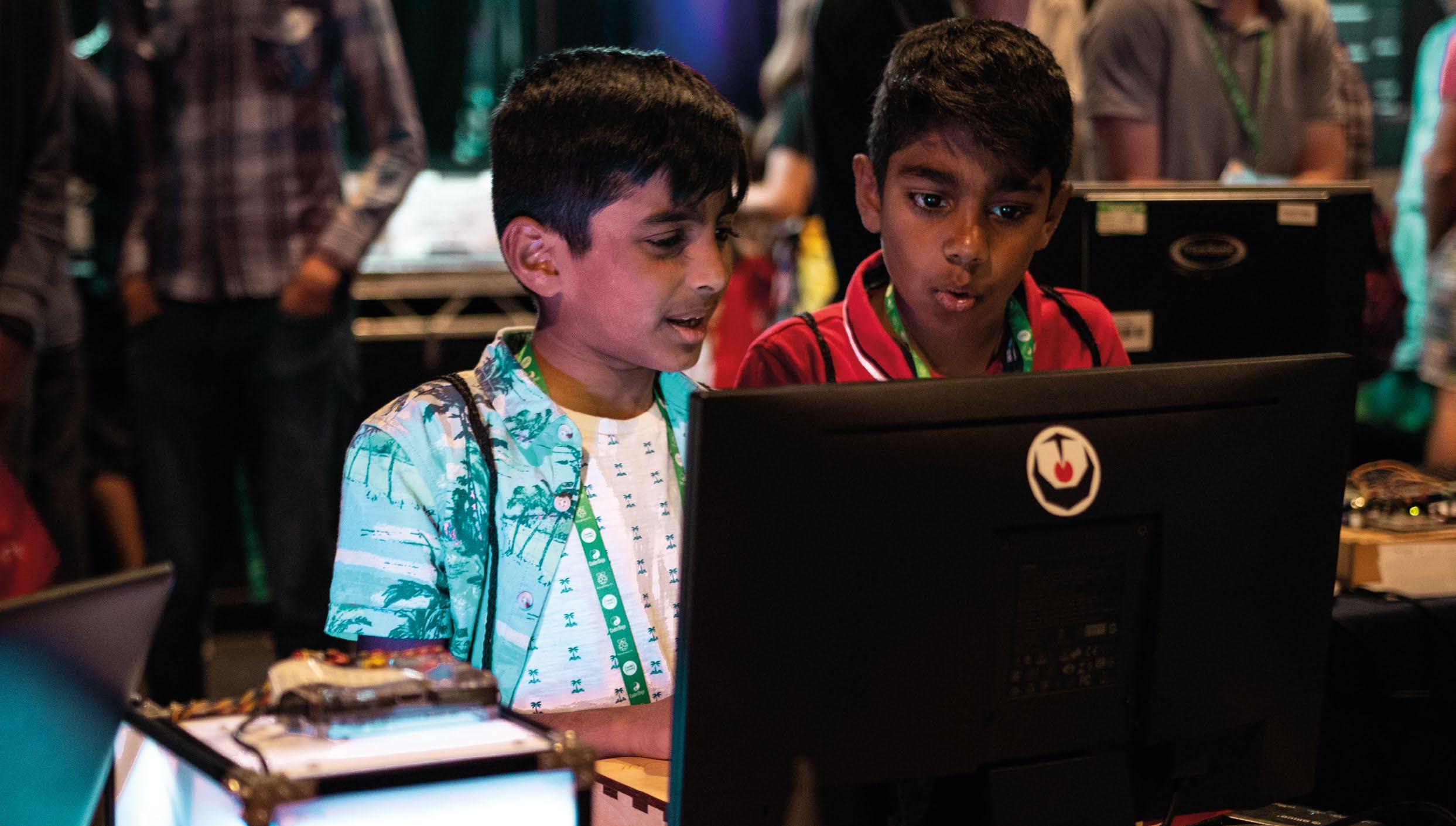
5 minute read
PHYSICAL COMPUTING IN THE CLASSROOM
n Pupils creatively design, craft, program, and build interactive objects using
Snap4Arduino and Arduino with pre-assembled sensors and actuators
Advertisement
BRINGING PHYSICAL COMPUTING TO THE CLASSROOM
Why and how should we teach physical computing in computer science education? Here are some useful guidelines for lesson planning and how to apply it in class
Physical computing is an interdisciplinary field involving the creative arts and design processes. It brings together hardware and software components, and joins the virtual world of computers to the physical world of humans by using concepts from embedded systems design and its neighbouring disciplines.
Products of physical computing make use of sensors and actuators to interact with their environment. Tools include microcontrollers and mini computers, often with extensions to facilitate component handling. Projects are of an iterative nature, quickly leading to working prototypes, such as the interactive garden at the end of this article. When planning and creating interactive objects, the focus is on ideas and intended interactions with the audience or environment. Purposeful tinkering is encouraged, to develop ideas and figure out how things work.
Benefits of physical computing
It all makes physical computing a promising approach for introducing embedded systems and underlying concepts in computer science (CS) teaching at secondary level. Many skills and competencies are gained. Programming concepts and control structures such as decisions, loops, variables, comparisons, or arithmetic operations are used to make objects that can flash lights, move, or make sounds reacting to their environment. Content related to embedded systems design, such as sensors, measurement, control, or common practices when working in larger projects, is also relevant.
In physical computing, pupils learn with (and about) interactive objects and systems, by creating tangible real-world products from their imagination. This can be used to promote creative learning in CS education, and boost students’ motivation. It fits the learning theory of constructionism. In this theory, learning is most effective in contexts where learners construct knowledge and develop competencies from their initiative and for a personally relevant purpose, while engaged in creating visible artefacts. With physical
EXEMPLARY LESSON STRUCTURE
n Introduction and motivation: provide examples in a short tutorial session n Tinkering: let learners explore the tools — provide manuals and cheat sheets n Brainstorming: find ideas for projects n Project planning: give guidance with worksheets n Presentation and discussion: reflect on ideas and plans n Creation: let learners work, in groups of two to four n Exhibition and reflection: present the project to an audience (open-door day, school party, etc.)

MAREEN PRZYBYLLA
Mareen is head of the endowed professorship for computer science didactics at the College of Education Schwyz, Switzerland. Her research focuses on physical computing in computer science education (@MPrzybylla).
computing, these are not only visible, but also tangible — similar to artistic sculptures.
Guidelines for teaching
To make it easier to start teaching physical computing, researchers developed guidelines and design principles for teaching and learning scenarios, as well as classroomready materials (helloworld.cc/myig).
Using a design-based research approach, theoretical concepts were tested in classrooms and evaluated with pupils and teachers. Promoting constructionist and creative activities, such as tinkering and prototyping, has proven to be a key part of successful learning scenarios. Contrary to expectations, it is not necessary to focus strictly on project planning before introducing tools for positive impact in the evaluated domains, but it helps stimulate ideas and creativity. A commonality in less successful courses was missing structure in project planning and implementations. Providing scaffolds is particularly helpful in groups that are not used to project work.
This results in the following design principles for physical computing teaching:
1 Integrate tinkering activities in dedicated learning phases in which content knowledge and skills are acquired 2 Let learners create their own interactive objects 3 Let learners develop working prototypes 4 Provide interesting themes and open topics to trigger imagination and creativity 5 Integrate creative methods 6 Integrate technical aspects with art/crafting 7 Provide scaffolds to structure the process of project work, including planning from a user perspective and planning from a developer perspective (non-technical and technical viewpoints) 8 Choose suitable construction kits and programming environments for the target group (low floors, wide walls, high ceilings) 9 Provide suitable crafting material and tools for the intended projects 10 Prepare a joint exhibition of all objects 11 Present the results to an audience
My Interactive Garden
My Interactive Garden (MyIG) is a lesson series that uses these ideas. A theme of creating an interactive garden exhibition was used to call for ideas and collaboration and encourage a variety of projects. Learners design, craft, program, and build objects using a construction kit based on the microcontroller platform Arduino, with preassembled sensors and actuators, and using the block-based programming environment Snap4Arduino.
They are provided with material and worksheets that structure the project work. In tinkering activities and learning phases, pupils learn and acquire specific concepts and skills. For instance, they are introduced to sensors and actuators as means of analogue and digital inputs and outputs; to ideas of events that can take place in parallel or serial; and to continuous-time and discrete systems.
In project work, learners develop prototypes in short iterations, which are discussed with their classmates and teacher throughout the process. They also detect problems and possible misunderstandings early, and find solutions to occurring problems. Finally, the students present their projects in an exhibition and discuss their experience with
the audience. They explain the purpose and functionality of their interactive objects and reflect on their progress.
MyIG and other physical computing settings were looked at in a cross-sectional pre- and post-intervention study (helloworld. cc/myig). Courses adhering to the design principles were more successful than most others. Physical computing can motivate learners more than many other activities in CS classrooms. MyIG implementations on average showed motivation values over twice as high as general physical computing activities, and appealed better to female students. In 71 percent of the analysed MyIG courses, the existing gap between boys’ and girls’ learner motivation in CS classes narrowed.
The consistent implementation of design principles for physical computing teaching generally showed positive results. In addition to higher learner motivation, most pupils liked the projects, had more fun, and felt more competent than in their prior lessons.











